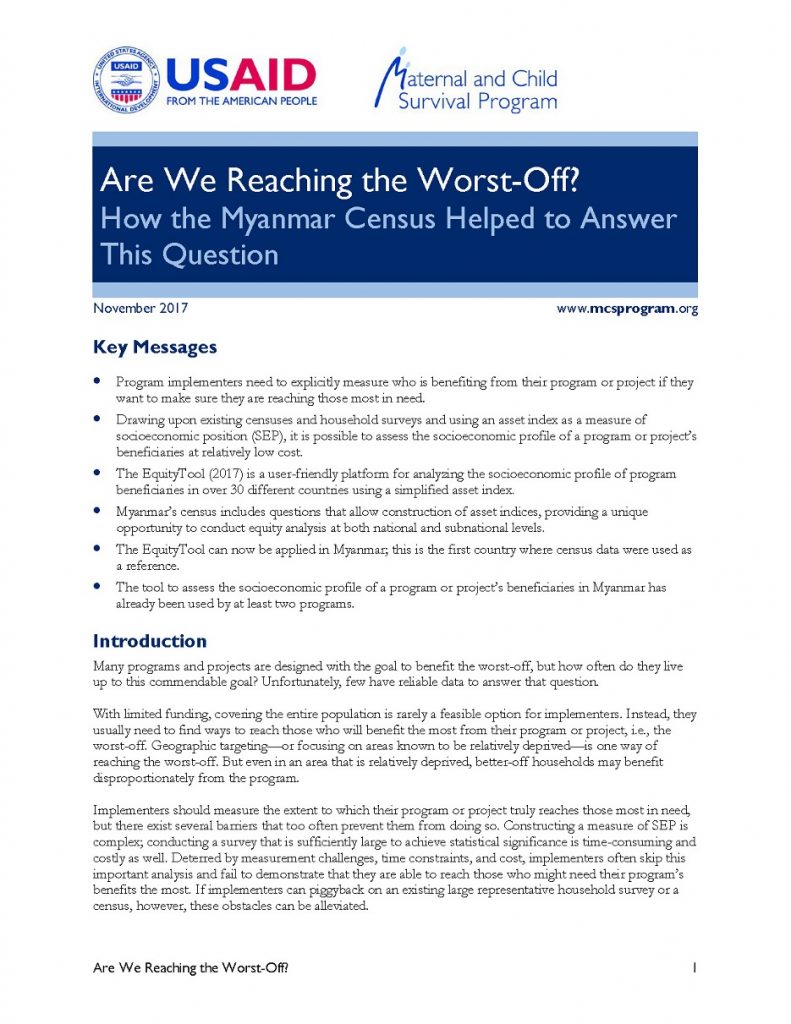
Many programs and projects are designed with the goal to benefit the worst-off, but how often do they live up to this commendable goal? Unfortunately, few have reliable data to answer that question. This brief draws upon existing censuses and household surveys using an asset index as a measure of socioeconomic position (SEP). It explains […]
Read More…
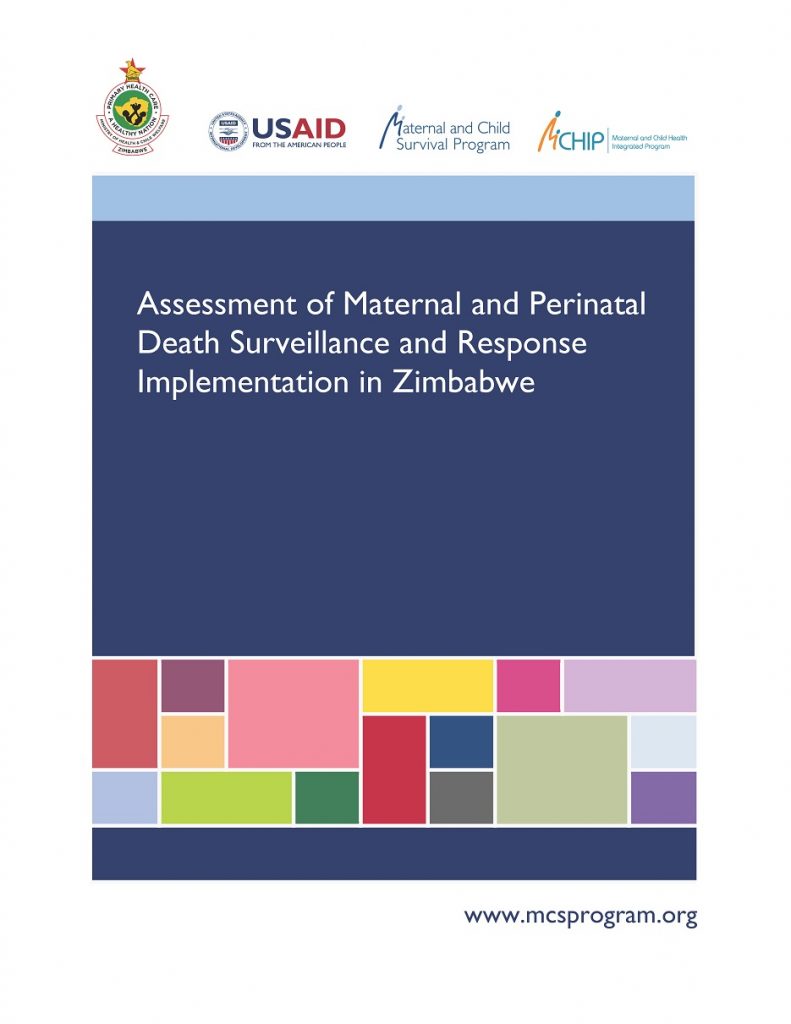
Zimbabwe’s Ministry of Health and Child Care (MOHCC), supported by the United States Agency for International Development’s Maternal and Child Survival Program (MCSP) operating locally in Zimbabwe as the Maternal and Child Health Integrated Program (MCHIP), set out to document experiences in implementing maternal death review, perinatal death review, and/or integrated maternal and perinatal death surveillance and response (MPDSR) […]
Read More…
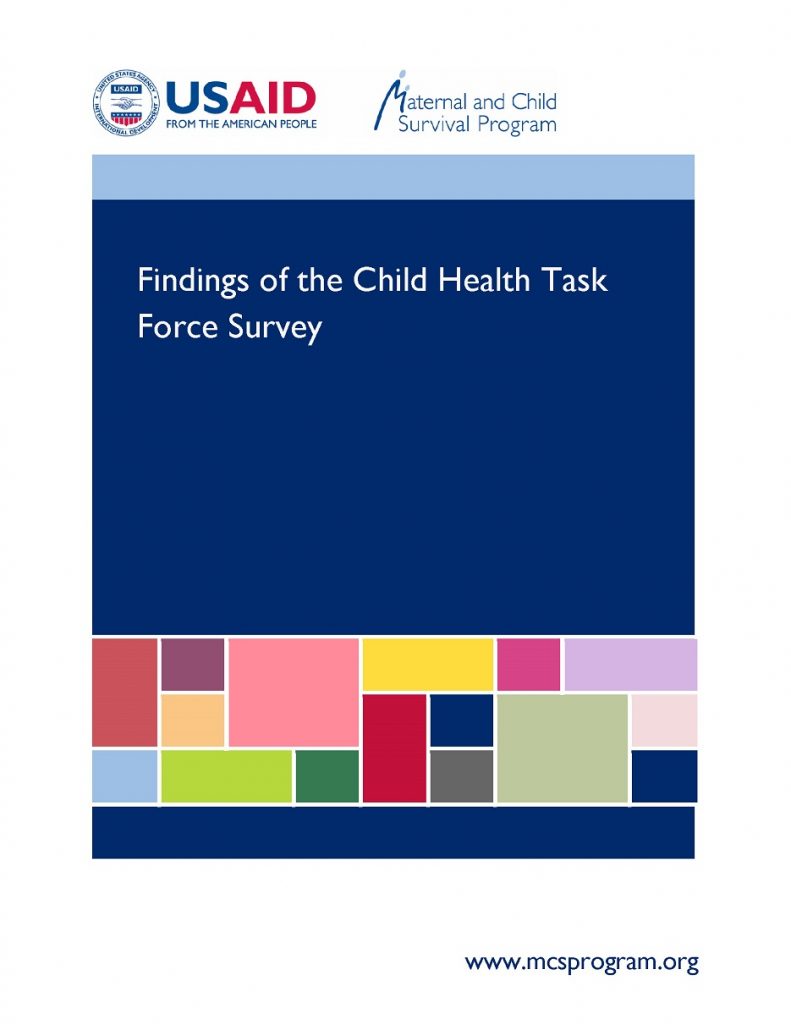
The purpose of this report is to inform the next steps in the consultation process for the development of terms of reference for the proposed Child Health Task Force (CHTF). The findings from the CHTF survey were interpreted in the context of recent reports and ongoing discussions among global child health stakeholders about what the […]
Read More…
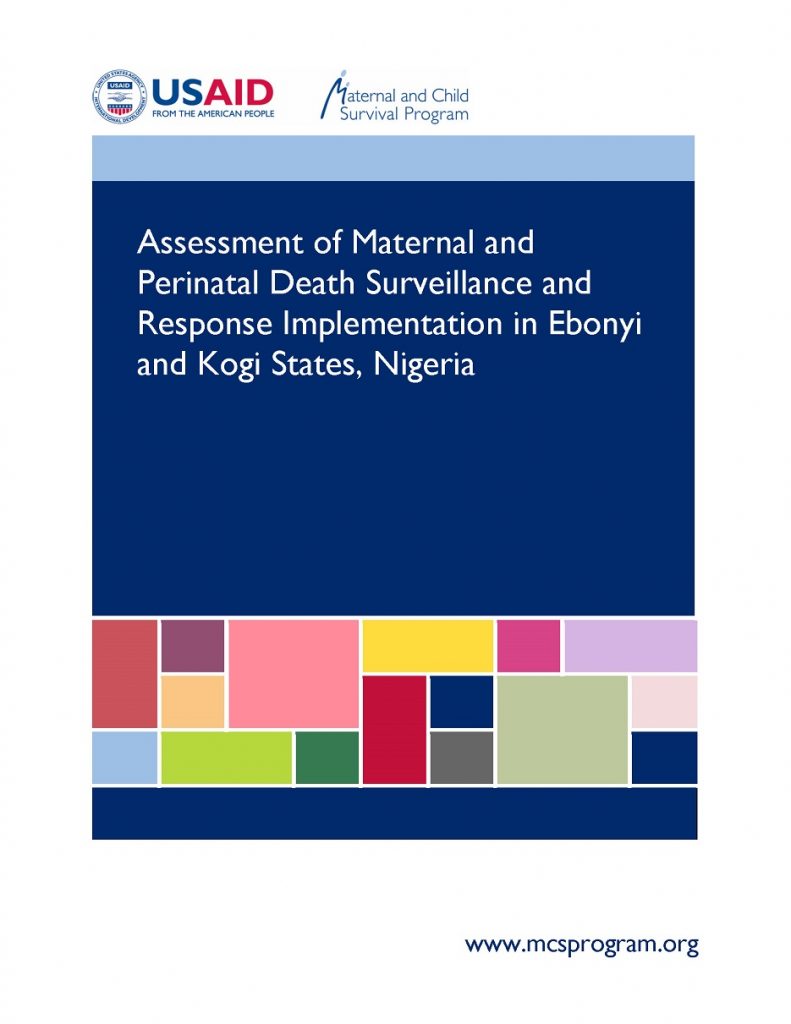
MCSP and Save the Children, together with several Nigerian professional associations, set out to document experiences to date in implementing maternal death review, perinatal death review, and/or integrated maternal and perinatal death surveillance and response (MPDSR) processes in Nigeria. The study sought to identify factors that have facilitated or inhibited the uptake and sustainability of […]
Read More…
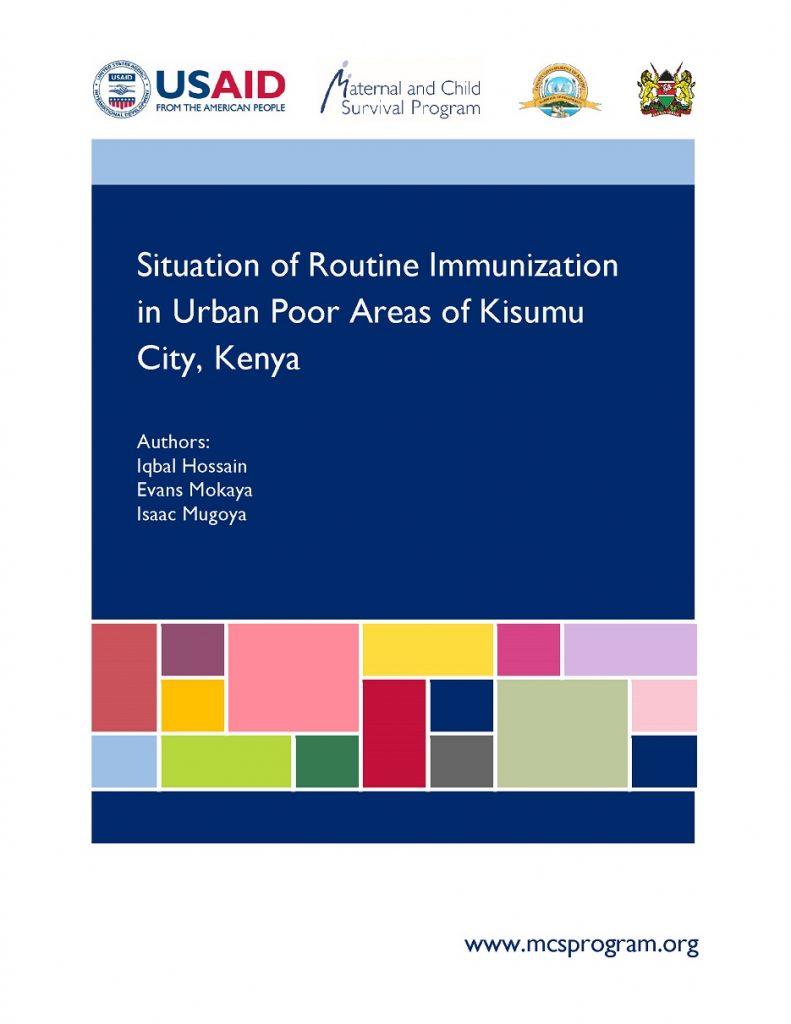
In Kenya, according to a 2013 assessment, approximately 353,000 people are unimmunized, and DPT3 coverage in the poorest wealth quintile is 10% lower than in the highest quintile. A situation analysis of routine immunization (RI) in Kisumu City was conducted to assess the immunization status of children, and to understand the challenges and barriers to […]
Read More…
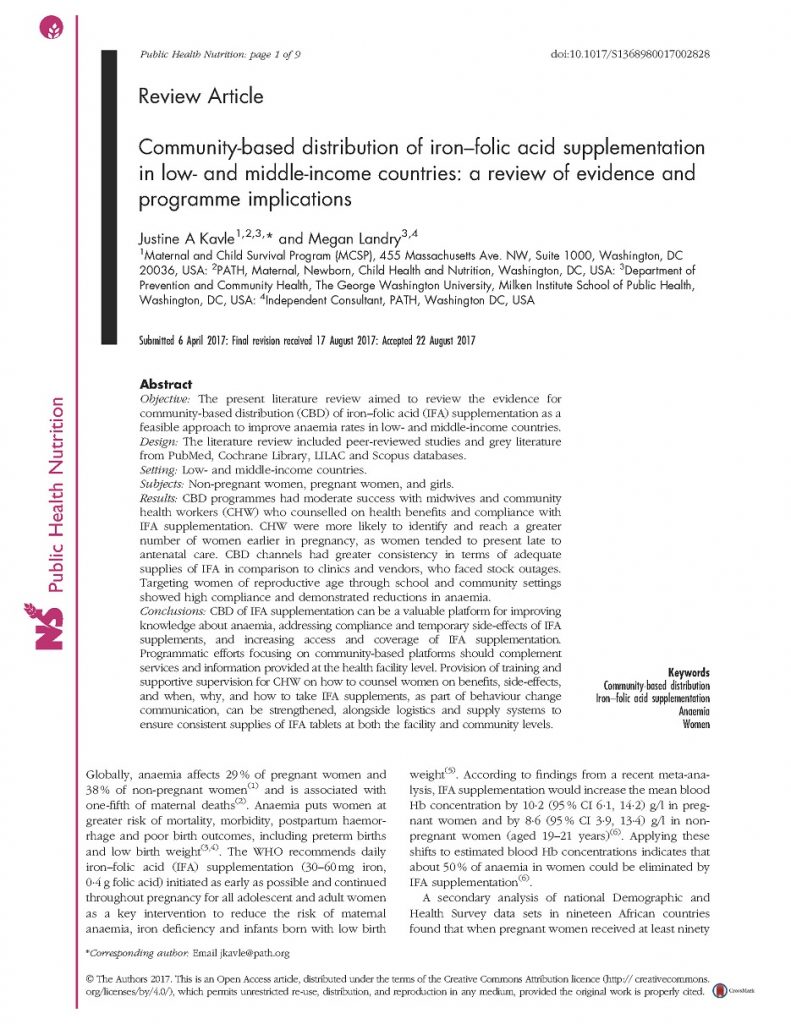
This literature review aimed to review the evidence for community-based distribution (CBD) of iron–folic acid (IFA) supplementation as a feasible approach to improve anaemia rates in low- and middle-income countries. CBD programmes had moderate success with midwives and community health workers (CHW) who counselled on health benefits and compliance with IFA supplementation. CHW were more […]
Read More…
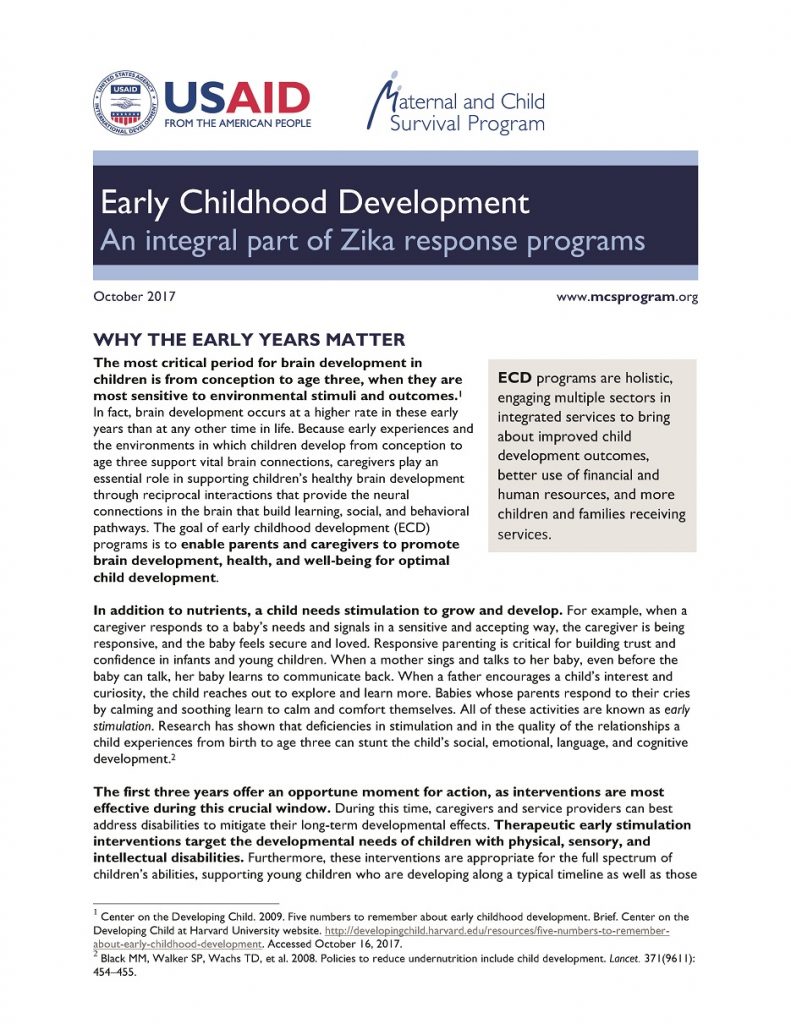
This brief discusses why, when it comes to Zika response programs, the early years of childhood development matter most. Early childhood development (ECD) programs are holistic, engaging multiple sectors in integrated services to bring about improved child development outcomes, better use of financial and human resources, and more children and families receiving services. This brief […]
Read More…
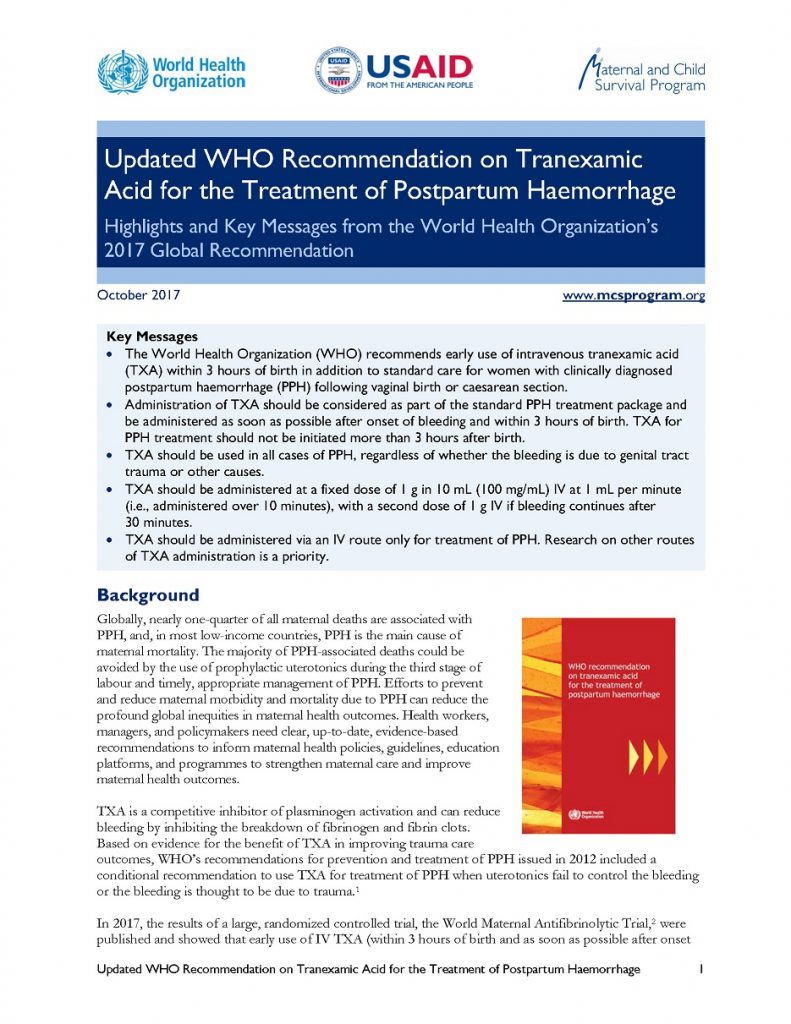
This summary brief highlights key messages from the updated World Health Organization’s recommendation on tranexamic acid (TXA) for the treatment of postpartum haemorrhage (PPH), including policy and program implications for translating the TXA recommendation into action at the country level. In 2012, WHO published recommendations for the prevention and treatment of postpartum haemorrhage, including a […]
Read More…
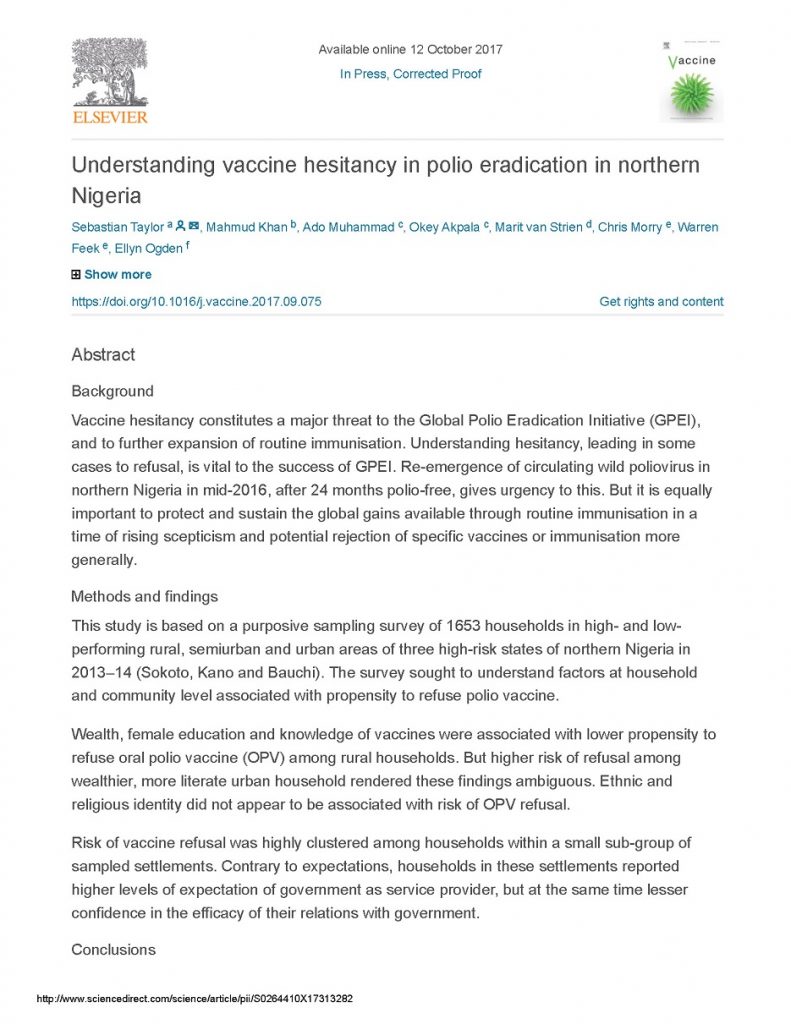
Vaccine hesitancy constitutes a major threat to the Global Polio Eradication Initiative (GPEI), and to further expansion of routine immunisation. Understanding hesitancy, leading in some cases to refusal, is vital to the success of GPEI. This article explains the method, findings and conclusions to a recent study in northern Nigeria that sought to understand factors at household and community level […]
Read More…
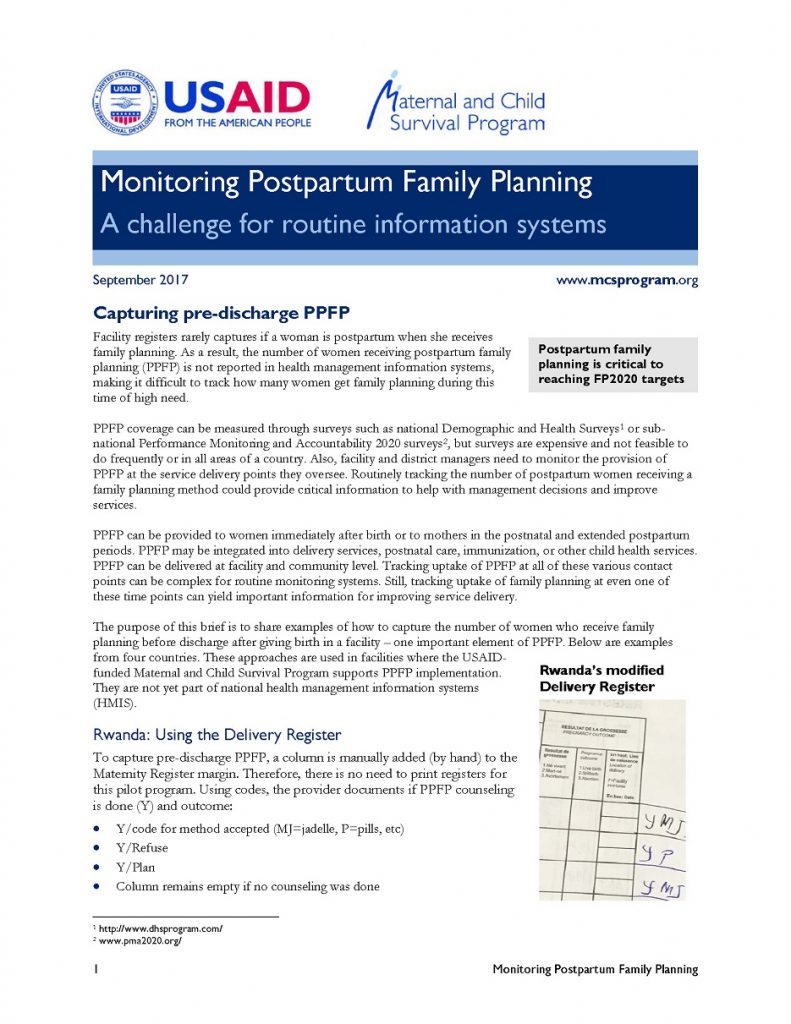
The purpose of this brief is to share examples of how to capture the number of women who receive family planning before discharge after giving birth in a facility – one important element of postpartum family planning (PPFP). The brief includes examples from four countries. These approaches are used in facilities where the USAID-funded Maternal and Child Survival […]
Read More…










